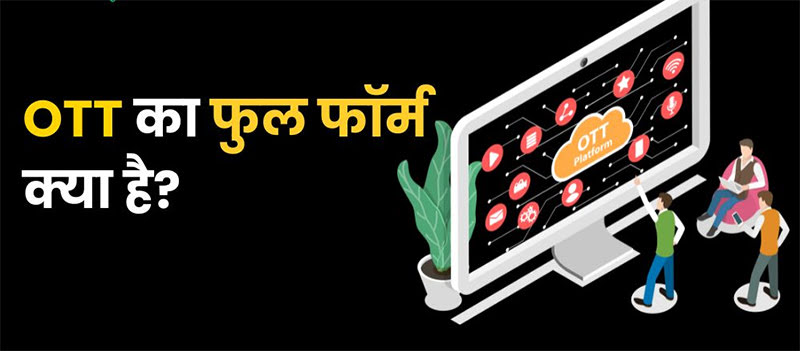You may have guessed that the acronym OTT stands for “Over-the-Top.” However, it’s possible that the full form won’t show you exactly what it means in the context of media and entertainment. Let’s dissect it. You may have heard the term “OTT” a lot in the age of digital media and streaming services. Whether you’re a gorge watcher, a film lover, or an educated individual, understanding a big motivator for OTT and its importance in media outlets is vital.
OTT Full Form
Over the Top (OTT) refers to television and film content that can be viewed through an internet connection rather than a cable or satellite connection. Users can watch movies, series, TV shows, and other content of their choice on OTT platforms like YouTube, MX Player, Prime Videos, Netflix, SonyLIV, and others. These platforms can be paid or free. People now have a plethora of options for watching their favorite content on a variety of devices, including smart TVs, mobile devices, computers, tablets, and more, thanks to OTT technology.
Also Check:-
What Does OTT Mean?
OTT means “beyond absurd” and alludes to innovation (OTT administrations or stages) that conveys transferred content through web associated gadgets. In the past, all video content was viewed on televisions connected to cable or satellite providers. In any case, watchers can now watch video content across different gadgets; done waiting be associated with link or broadcast television.
What is OTT Streaming?
Content that is played over the internet is referred to as OTT streaming. OTT streaming can be categorized as either pay-to-access or free-to-access. Nowadays, a lot of OTT services require paying for a subscription. However, there are a number of ways to monetize, and many of them use advertisements on their platform rather than subscription-based monetization. Some platforms give users a choice between free access with ads or paying for ad-free access in tiered packages.
Difference Between OTT & Live Streaming
OTT portrays the innovation that follows through on-request satisfied by means of the web across gadgets like mobile phones, CTVs, PCs, and tablets. The internet broadcasting of content in real time, allowing viewers to tune in and watch as it happens, is known as live streaming.
What Are The Major OTT Platforms?
The OTT service most frequently mentioned is video streaming. OTT providers in the video streaming industry include Hulu, Disney+, Amazon Prime, HBO Max, and YouTube. In the audio streaming industry, Spotify is regarded as an OTT platform for podcasts and music, while WhatsApp, Telegram, Slack, and Signal are regarded as OTT platforms for communication.
Also Check:-
What is An OTT Aggregator?
An OTT aggregator is a computerized stage or administration that permits clients to helpfully peruse, search, and watch content from various web-based features without expecting to switch between different applications or sites. Through a single interface, the aggregator gathers and consolidates content from various streaming service providers. OTT aggregators, like Viaccess-Orca, Comviva, and Goodbye Sky Gorge, have become progressively famous as the quantity of web-based features has developed, helping clients find and access content all the more without any problem.
Understanding OTT
The term “Over-the-Top” refers to the internet delivery of media content, including video, audio, and other forms of media, without using traditional distribution channels like cable or satellite television. The idea of directly contacting customers by going above and beyond these established channels is what gave rise to the term “over-the-top.” Customarily, media content, for example, Programs, motion pictures, and music were circulated through link or satellite suppliers. The options for viewers were limited, and they had to stick to the broadcasters’ predetermined schedules.
What Does OTT Stand For?
The term “Over-The-Top” is OTT. It talks about how video content and other media services are delivered over the Internet instead of through traditional cable or satellite TV providers. Consumers can directly access a wide range of content via internet-connected devices thanks to OTT technology. It certainly provides numerous on-demand viewing options and a great deal of adaptability.
How Does OTT Work?
OTT (Over-The-Top) works by conveying video and sound substance over rapid web associations. On one end, content creators or service providers use specialized streaming protocols to host their media on servers. On the other hand, this content can be accessed by users using a variety of tools, such as smartphones, smart TVs, or computers.
Also Check:-
Final Words
The on-demand nature of OTT platforms is a key feature. OTT allows users to watch content whenever and wherever they want, in contrast to traditional broadcasting, where viewers had to wait for a specific time slot to watch their favorite shows. They have complete control over their viewing experience thanks to their ability to pause, rewind, and fast forward through the content. Numerous factors have contributed to the rise of OTT. First, streaming has become more seamless and accessible to a wider audience thanks to the widespread availability of high-speed internet connections.
